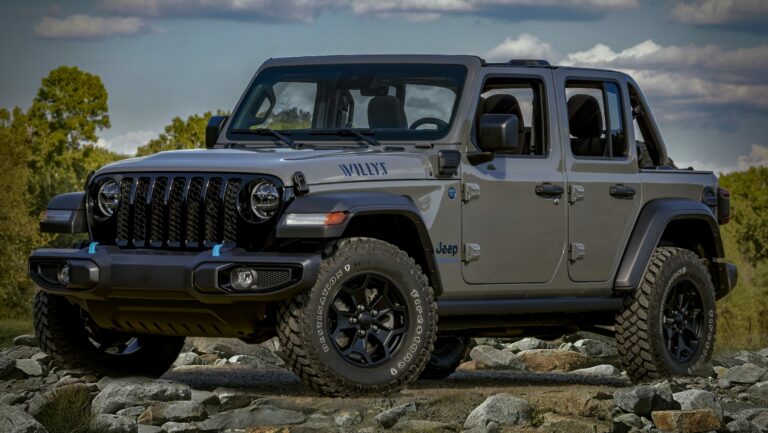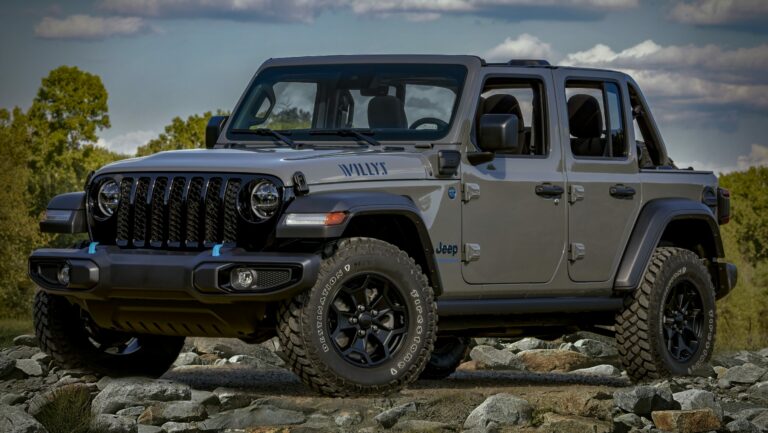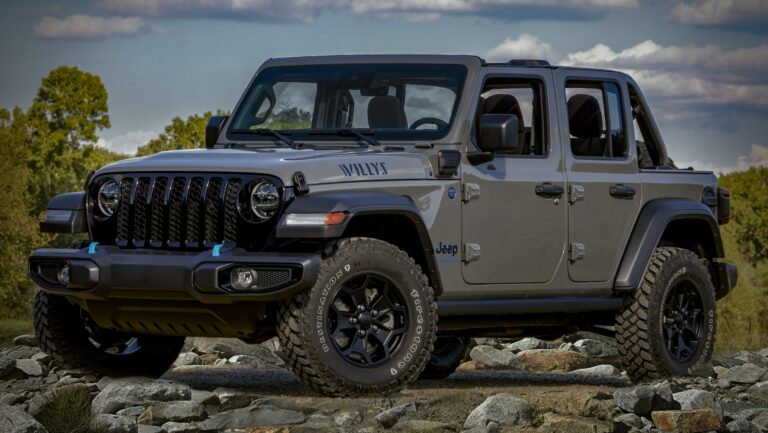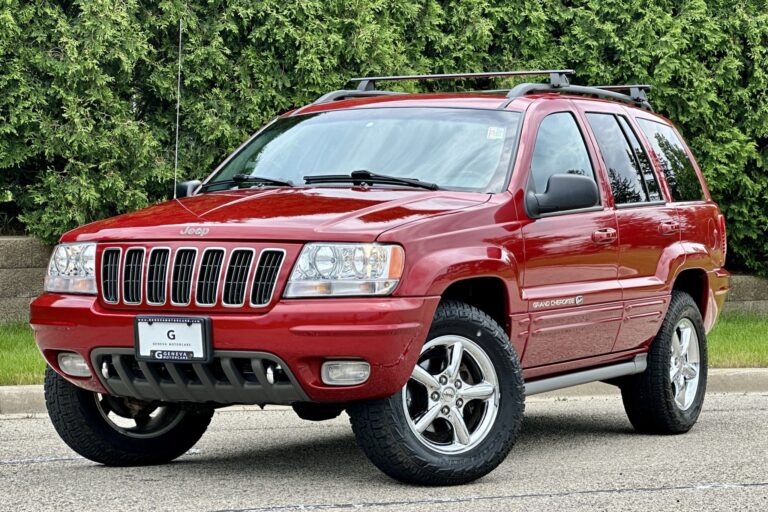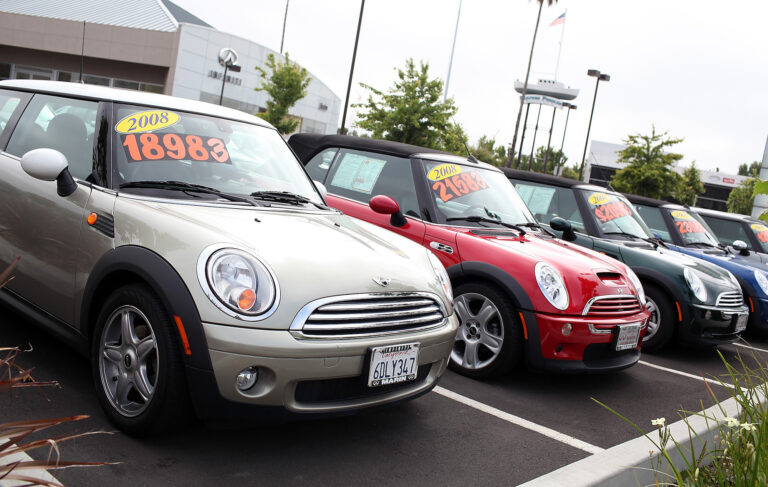1983 Jeep CJ7 For Sale: Your Ultimate Guide to Acquiring an Off-Road Icon
1983 Jeep CJ7 For Sale: Your Ultimate Guide to Acquiring an Off-Road Icon jeeps.truckstrend.com
The year 1983 holds a special place in the hearts of Jeep enthusiasts. It represents one of the final chapters for the legendary CJ7 before the transition to the Wrangler era. The 1983 Jeep CJ7 is more than just a vehicle; it’s a testament to rugged simplicity, off-road prowess, and an enduring symbol of American adventure. For those seeking a classic 4×4 that embodies freedom, customizability, and a tangible connection to automotive history, a 1983 Jeep CJ7 for sale presents an unparalleled opportunity.
This comprehensive guide aims to equip prospective buyers with all the necessary knowledge, from understanding its unique appeal to navigating the buying process, ensuring you make an informed decision when pursuing this iconic piece of machinery. Whether you’re a seasoned off-roader, a classic car collector, or simply someone yearning for open-air driving thrills, the 1983 CJ7 offers an experience unlike any other.
1983 Jeep CJ7 For Sale: Your Ultimate Guide to Acquiring an Off-Road Icon
The Enduring Appeal of the 1983 Jeep CJ7
The Jeep CJ7 (Civilian Jeep) was produced from 1976 to 1986, bridging the gap between the utilitarian CJ5 and the more refined Wrangler YJ. The 1983 model year sits squarely in the latter half of its production run, benefiting from several refinements while retaining the core, no-nonsense character that defines the CJ series. Its enduring appeal stems from several key factors:
- Classic Design: The CJ7 boasts the quintessential Jeep silhouette – round headlights, seven-slot grille, flat fenders, and a compact, upright stance. Its removable doors and fold-down windshield epitomize the spirit of open-air adventure.
- Off-Road Capability: Built on a robust ladder frame with solid axles (Dana 30 front, AMC 20 rear), the CJ7 was designed for serious off-roading. Its short wheelbase and ample ground clearance make it incredibly agile on trails.
- Mechanical Simplicity: Unlike modern vehicles laden with complex electronics, the 1983 CJ7 is mechanically straightforward. This makes it a favorite among DIY enthusiasts, as maintenance and repairs are often manageable for those with basic mechanical skills.
- Customization Potential: The aftermarket support for CJ7s is immense. Owners can easily modify them for enhanced off-road performance, street comfort, or a unique aesthetic. This adaptability ensures that no two CJ7s are exactly alike, allowing owners to truly make it their own.
- Investment Potential: Well-maintained or professionally restored 1983 CJ7s are increasingly sought after by collectors. Their classic status, combined with dwindling numbers of pristine examples, suggests they can hold or even appreciate in value over time.

For 1983, the primary engine option was the venerable 4.2L (258 cubic inch) AMC Inline-6, known for its torque and durability. A smaller 2.5L (151 cubic inch) Iron Duke I4 was also available, though less common. Transmission options typically included manual gearboxes like the T-4, T-5, or the heavy-duty T-176, as well as the robust TF999 automatic.
Key Considerations When Buying a 1983 Jeep CJ7
Acquiring a classic vehicle like a 1983 CJ7 requires careful consideration. The age of these vehicles means that condition varies wildly, and a thorough inspection is paramount.
- Rust is the Enemy: This is the single most critical factor. CJ7s are notorious for rust, especially in the frame (check frame rails, spring perches, shackle mounts), body tub (floorboards, rocker panels, rear wheel wells), and front fenders. Surface rust can be managed, but extensive structural rust can be a deal-breaker, requiring costly and time-consuming repairs. Use a magnet to check for body filler over rusted areas.
- Engine Health:
- 4.2L (258 I6): Listen for knocking, excessive smoke, and check for oil leaks. These engines are generally robust but can suffer from oil pressure issues, especially if neglected. Check the carburetor for proper function.
- 2.5L (151 I4): While less powerful, these are also reliable. Look for similar signs of wear.
- Ensure the engine starts easily, idles smoothly, and doesn’t overheat.

- Transmission and Transfer Case: Test all gears in both 2WD and 4WD (high and low range). Listen for grinding, popping out of gear, or excessive play. The transfer case (likely a Dana 300) should engage smoothly.
- Axles and Drivetrain: Check for excessive play in U-joints, worn wheel bearings, and differential leaks. The AMC 20 rear axle is known for its two-piece axle shafts, which are prone to failure under heavy stress; many have been upgraded to one-piece shafts or different axles entirely.
- Steering and Suspension: Look for excessive steering play, worn tie rod ends, ball joints, and leaky shock absorbers. A properly functioning suspension is crucial for both safety and ride quality.
- Electrical System: Old wiring can be problematic. Test all lights, gauges, wipers, and the heater/blower motor. Look for any signs of amateur wiring jobs.
- Modifications vs. Originality: Decide whether you prefer an original, unmolested CJ7 or one that has been modified. Modifications can add value (e.g., lift kits, upgraded axles, engine swaps) or detract from it (e.g., poor quality work, irreversible changes). Be wary of "franken-Jeeps" assembled from various parts without proper documentation.
- Paperwork and Always ensure the vehicle has a clear title, and the VIN on the title matches the VIN on the vehicle. Be cautious of "rebuilt" or "salvage" titles without a clear explanation of the damage.
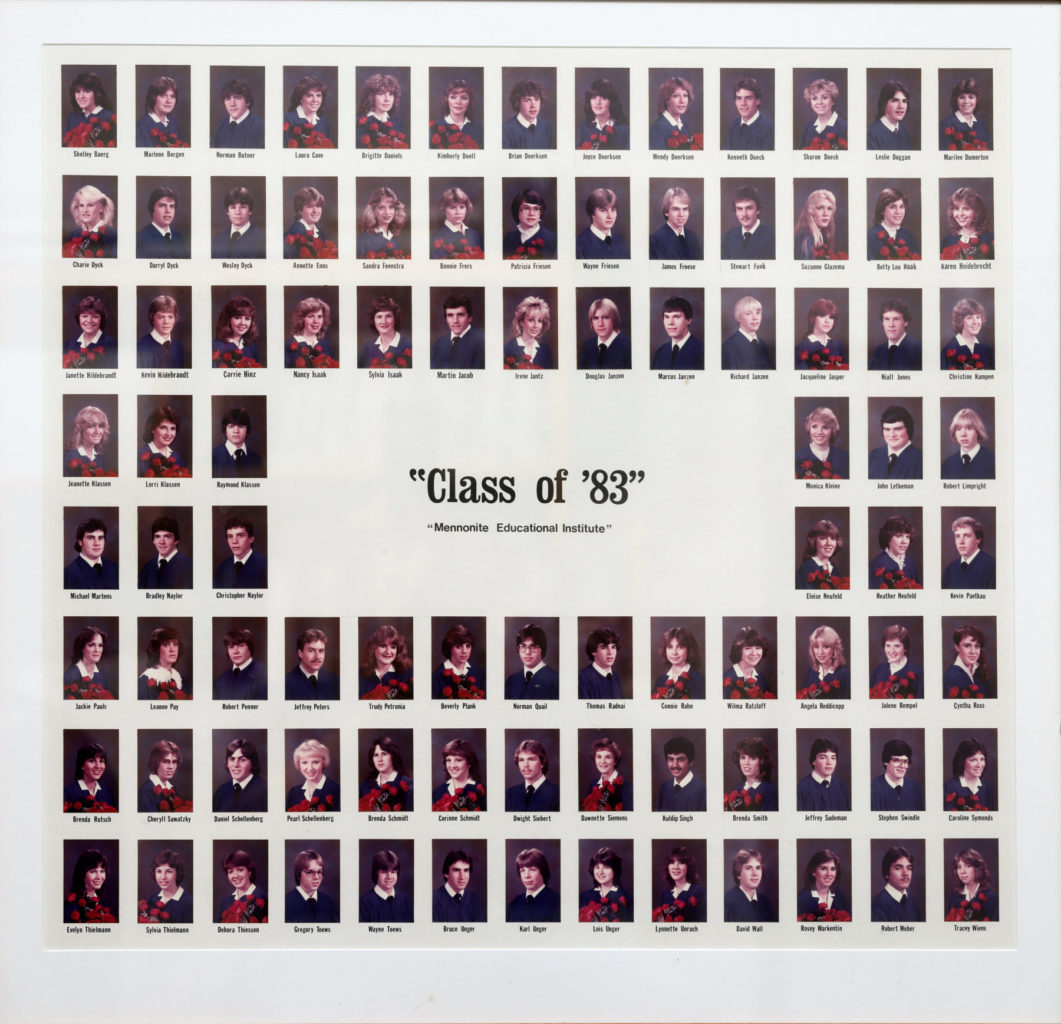
Understanding 1983 CJ7 Configurations and Variants
While there weren’t drastically different "models" of the 1983 CJ7, understanding the factory options and common trim packages can influence value and desirability:
- Engines: The 4.2L I6 (258ci) is generally preferred for its balance of power and reliability. The 2.5L I4 (151ci) is less desirable but can be fine for light use.
- Transmissions: The T-176 manual is considered the most robust manual option. The TF999 automatic is also very durable. The T-4 and T-5 manuals are lighter duty.
- Axles: All 1983 CJ7s came with a Dana 30 front axle and an AMC 20 rear axle. Many owners upgrade the AMC 20 due to its known weaknesses.
- Trim Packages:
- Renegade: Often included a Levi’s interior, special graphics, chrome accents, and wider wheels/tires.
- Laredo: The top-tier luxury package, featuring leather-wrapped steering wheel, chrome grilles, special wheels, and upgraded interior trim.
- Limited: A rare, even more upscale package with power windows, air conditioning, and unique upholstery.
- Base Model: Simple and no-frills, often the starting point for extensive customization.
- Hardtop vs. Soft Top: A factory hardtop is a desirable option, offering better security and weather protection, but soft tops are more common and offer the true open-air experience.
The Buying Process: A Step-by-Step Guide
- Research and Set a Budget: Understand the market value for 1983 CJ7s in various conditions. Factor in not just the purchase price but also potential repair, maintenance, and insurance costs.
- Locate Potential Vehicles: Search online marketplaces (Craigslist, eBay Motors, Bring a Trailer, Facebook Marketplace), dedicated Jeep forums, classic car websites (Hemmings, ClassicCars.com), and local classifieds.
- Initial Contact and Information Gathering: Ask detailed questions about the vehicle’s history, maintenance records, known issues, and reasons for selling. Request numerous photos, especially of common rust areas.
- In-Person Inspection: If the initial screening goes well, schedule a visit. Bring a flashlight, a magnet, and a knowledgeable friend if possible. Follow the "Key Considerations" outlined above.
- Professional Pre-Purchase Inspection (PPI): For any vehicle you are seriously considering, invest in a PPI by a reputable mechanic specializing in older 4x4s or Jeeps. They can identify issues you might miss and provide an estimate for necessary repairs.
- Test Drive: Drive the CJ7 under various conditions – city streets, highways, and if possible, some mild off-road terrain (with permission). Pay attention to steering, braking, acceleration, unusual noises, and transmission shifts.
- Negotiation: Based on your research and the PPI findings, negotiate the price. Be prepared to walk away if the price doesn’t align with the vehicle’s condition or your budget.
- Paperwork and Payment: Once an agreement is reached, ensure all paperwork (title, bill of sale) is correctly filled out. Arrange payment securely.
- Insurance and Registration: Get the vehicle insured before driving it home. Register it with your local DMV.
Owning and Maintaining a Classic CJ7
Owning a 1983 CJ7 is a rewarding experience, but it requires a commitment to maintenance.
- Parts Availability: Fortunately, due to the CJ7’s popularity and longevity, parts availability is excellent. Many components are still manufactured, and a thriving aftermarket provides upgrades and reproduction parts.
- Regular Maintenance: Adhere to a strict maintenance schedule, including oil changes, fluid checks, greasing chassis components, and inspecting for wear and tear.
- Rust Prevention: Keep your CJ7 clean, especially after off-roading or driving in salty conditions. Consider undercoating or rust-inhibiting sprays.
- Community Support: Join online forums, local Jeep clubs, or classic car groups. The collective knowledge and camaraderie of fellow CJ owners are invaluable for troubleshooting, advice, and finding parts.
Challenges and Solutions
- Challenge: Rust:
- Solution: Thorough pre-purchase inspection. For existing rust, address it promptly. Small areas can be repaired with patch panels, but extensive frame or body tub rust often requires professional welding or even body tub replacement, which can be costly.
- Challenge: Old Wiring/Electrical Gremlins:
- Solution: Inspect wiring harnesses for brittle insulation or splices. Consider replacing key sections or upgrading the entire harness if problems persist. Many aftermarket wiring kits are available.
- Challenge: Performance (lack thereof):
- Solution: The 258 I6 is reliable but not a speed demon. Upgrades like a modern carburetor (e.g., Weber), fuel injection conversion (e.g., Howell, Holley Sniper), or a full engine swap (e.g., Chevy 350, LS, Ford 302) can significantly boost performance.
- Challenge: Safety (older standards):
- Solution: While you can’t make a 1983 vehicle as safe as a modern one, you can improve it. Ensure seatbelts are in good condition (consider 3-point belts), check brake lines and components, and for serious off-roading, consider adding a roll cage.
1983 Jeep CJ7 For Sale: Estimated Price Guide
Please note that prices for classic vehicles like the 1983 Jeep CJ7 are highly variable based on condition, mileage, originality, modifications, regional demand, and seller motivation. This table provides a general estimate.
| Condition Category | Estimated Price Range (USD) | Key Characteristics & Considerations and the 1983 CJ7, therefore, holds a special place in the Jeep family, bridging the gap between its even more raw ancestors and the modern era of Wranglers. It represents a fantastic opportunity for those looking to buy into a robust, customizable, and historically significant vehicle. By conducting thorough research, performing detailed inspections, and budgeting for potential improvements, you can acquire a truly rewarding off-road companion. The journey of finding and restoring your ideal 1983 Jeep CJ7 is part of the adventure, culminating in the joy of driving a genuine American icon.
Frequently Asked Questions (FAQ)
Q1: What is the typical mileage for a 1983 CJ7 for sale?
A1: Given their age, typical mileage varies wildly, from under 50,000 miles for garage queens or fully restored examples to well over 150,000-200,000 miles for daily drivers. Focus more on overall condition and maintenance history rather than just the odometer reading.
Q2: Are parts hard to find for a 1983 Jeep CJ7?
A2: No, parts are generally easy to find. The CJ7 shared many components with other Jeep models, and its enduring popularity has led to a thriving aftermarket for both OEM-style replacement parts and aftermarket upgrades.
Q3: Is a 1983 CJ7 reliable enough to be a daily driver?
A3: While mechanically simple and robust, an unrestored 1983 CJ7 will require more frequent maintenance and attention than a modern vehicle. It can be a daily driver if it’s in excellent mechanical condition and you’re comfortable with its classic characteristics (e.g., manual steering, less refined ride). Many owners prefer to use them as weekend vehicles or dedicated off-roaders.
Q4: What’s the best engine for a 1983 CJ7?
A4: The 4.2L (258 cubic inch) Inline-6 is widely considered the best factory engine for the 1983 CJ7 due to its excellent low-end torque, durability, and ease of maintenance. The 2.5L Iron Duke I4 is less powerful. Many owners perform engine swaps for more modern powerplants.
Q5: What should I look for regarding rust, specifically?
A5: The most critical areas are the frame (especially where body mounts attach, spring perches, and around the steering box), the body tub (floorboards under the seats, rear cargo area, rocker panels, and where the body mounts to the frame), and the front fenders behind the tires. Pay close attention to areas that collect dirt and moisture.
Q6: Can I put a modern engine in a 1983 CJ7?
A6: Yes, engine swaps are a very common modification for CJ7s. Popular choices include Chevrolet small-block V8s (350, LS series), Ford small-block V8s (302), or even modern Jeep 4.0L I6 engines from later Wranglers. Kits are available to facilitate these swaps, but it’s a significant undertaking.
Q7: What’s the difference between a CJ7 and a Wrangler?
A7: The CJ7 was the predecessor to the Wrangler. Key differences include the CJ7’s flat, unraked windshield, and its leaf springs both front and rear. The Wrangler (YJ) introduced a raked windshield and rectangular headlights (briefly), and later (TJ, JK, JL) coil spring suspensions for improved ride comfort. The CJ7 is generally considered more rugged and raw.
